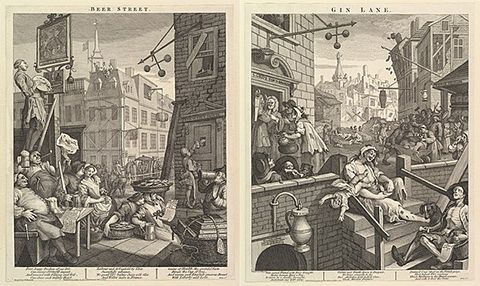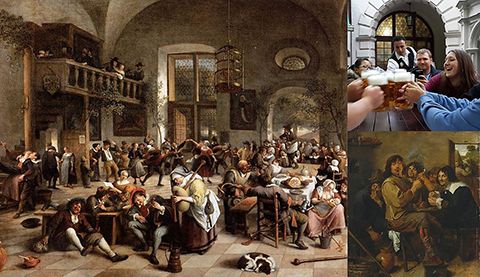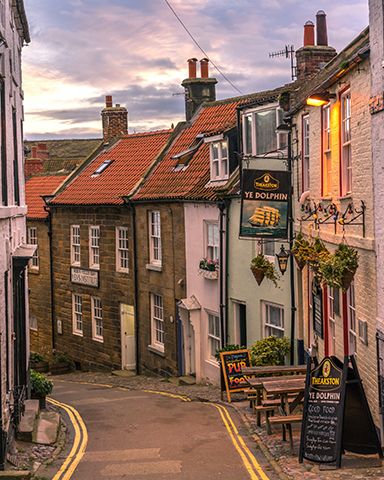Pub scenes from around the world: The English View
If you are a subscriber or regular follower of the AnArt4Life blog you will know that I've promised to take you on a pub crawl around the world. The first Pub Post took us back to the 1600s and into Flemish Taverns.
Today we are off to the home of pubs!! England!! And I am sure you will be surprised to know that it is believed that the first British pub actually started life as a great Italian wine bar, and dates back almost 2000 years.1

It was an invading Roman army that first brought Roman roads, Roman towns and Roman pubs known as tabernae to the English shores in 43 AD. Such tabernae, or shops that sold wine, were quickly built alongside Roman roads and in towns to help quench the thirst of the legionary troops.1
And as history would tell us - the Romans certainly liked a drink or three - I believe Posca was their poison - a vinegary drink made by mixing sour wine with water and flavouring herbs. Its original purpose was medicinal – considered a remedy for ailments of all sorts – but it became an everyday drink for the Roman Army and the lower classes from around the second century BC, continuing to be used throughout Roman history and into the Byzantine period.2

It was ale, however, that was the native British brew, and it appears that these tabernae quickly adapted to provide the locals with their favourite tipple, with the word eventually being corrupted to tavern.
These taverns or alehouses not only survived but continued to adapt to an ever changing clientele, through invading Angles, Saxons, Jutes, and not forgetting those fearsome Scandinavian Vikings. In around 970 AD, one Anglo-Saxon king, Edgar, even attempted to limit the number of alehouses in any one village. He is also said to have been responsible for introducing a drinking measure known as ‘the peg’ as a means of controlling the amount of alcohol an individual could consume, hence the expression “to take (someone) down a peg”.1

Taverns and alehouses provided food and drink to their guests, whilst inns offered accommodation for weary travellers. These could include merchants, court officials or pilgrims travelling to and from religious shrines, as immortalised by Geoffrey Chaucer in his Canterbury Tales.1
Inns also served military purposes; one of the oldest dating from 1189 AD is Ye Olde Trip to Jerusalem in Nottingham, and is said to have acted as a recruitment centre for volunteers to accompany King Richard I (The Lionheart) on his crusade to the Holy Lands.1
But the ale-house was used for other purposes as there is an early print of George Fox (1624- 1691) - an English missionary and founder of the Society of Friends (Quakers)- preaching in a tavern.

The drinking of ale did however get some good publicity when the gin crisis began in the 1700s following years of support from the British Government. By 1743, England was drinking 2.2 gallons (10 litres) of gin per person per year!6
As consumption levels increased, an organised campaign for more effective legislation began to emerge. Amongst the anti-gin campaigners were Daniel Defoe (who had originally campaigned for the liberalisation of distilling, but later complained that drunken mothers were threatening to produce a "fine spindle-shanked generation" of children), and – the artist – William Hogarth. 6
Hogarth's engraving Gin Lane is a well known image of the gin craze, and is often paired with Beer Street, creating a contrast between the miserable lives of gin drinkers and the healthy and enjoyable lives of beer drinkers.

And so - beer won over gin and today perhaps there are strong similarities between the ale-houses of the C18th and the C21st!

Now I know some of you will be outraged that the early ale-houses were male dominated and of course to a large extent this was true. But they were not exclusively male dominated as many of these establishments were run by widows and of course the maids were young women. But of interest a one historian has estimated that as many as 30% of the customers in Essex alehouses in the sixteenth and seventeenth centuries were women.7
You might like to read more about the gender differences within the English pub of the C17th and meet the remarkable Elizabeth Case who could not only beat the men at holding a beer could beat them at shovelboard!! 7
But for me, the English pub will always remain an artist's delight.

If you would like to see some records in oil on canvas of very drunk people click here or perhaps you would prefer to wait until tomorrow when Jane will bring you a post from the much more refined world of Gabrielle Chanel.
Credits
1. historic-uk.com
2. military-history.org
3. news.artnet.com
4. commons.wikimedia.org
5. britannica.com
6. en.wikipedia.org
7. manyheadedmonster.com
8. thecultural.me
